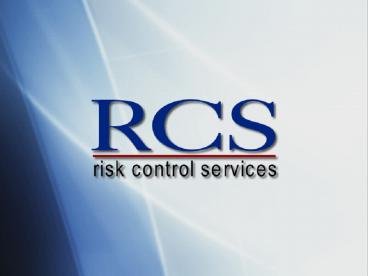Bloodborne Pathogens - PowerPoint PPT Presentation
1 / 18
Title:
Bloodborne Pathogens
Description:
Bloodborne Pathogens An overview of the Regulatory Requirements for Bloodborne Pathogens Programs Bloodborne Pathogens 29CFR1910.1030 Definitions Bloodborne Pathogens ... – PowerPoint PPT presentation
Number of Views:466
Avg rating:3.0/5.0
Title: Bloodborne Pathogens
1
(No Transcript)
2
Bloodborne Pathogens
- An overview of the Regulatory Requirements for
Bloodborne Pathogens Programs
3
Bloodborne Pathogens29CFR1910.1030
- OSHA estimates that nearly 600,000 percutaneous
exposure incidents occur annually. This simply
means that incidents such as needlesticks and
cuts resulting from contact with sharps occur at
an alarming rate! The purpose of the standard is
to control and minimize the hazards associated
with Bloodborne pathogens in the workplace.
4
DefinitionsBloodborne Pathogens
- Microorganisms that are present in human blood
and can cause disease. - Examples
- HIV
- Hepatitis B
5
DefinitionsBloodborne Pathogens
- Occupational Exposure
- Reasonably anticipated skin, mucous membrane,
eye, or parenteral contact with blood or
infectious materials during work.
6
The RegulationRequires
- A Written Program which must include
- List of job classifications with potential
exposures - Methods of compliance
- Personal protective equipment
- Incident reporting and follow up
7
The RegulationRequires
- A Written Program which must include
- Hazard communication and training toe
- Annual program evaluation
8
Employees with Occupational Exposure
- Job classifications that entail exposures to
bloodborne pathogens are to be identified and
should be made without regard to PPE issues
9
Methods of Compliance
- Engineering Controls
- Self sheathing sharps
- Administrative Controls
- Hand washing
- Food and drink rules
- Policies and Procedures for handling sharps
- PPE
10
Engineering
- Safer devices for medical work are being created
every year. Keep up with the current trends. - Engineering will not solve all of the problems,
but give your employees good materials with which
to work.
11
Administrative
- Administrative controls are usually policies and
procedures (PP). - Require employees to wash their hands regularly.
- Use specific disposal procedures
- Wear appropriate PPE
12
Personal Protective Equipment (PPE)
- Will be provided by the employer
- Employer will ensure its use
- Examples
- Gloves
- Aprons
- Gowns
- Eye/face protection
- Masks
- Dispose of contaminated PPE properly
13
Incident Reportingand Follow Up
- Incident Report Procedures must include
- Description of incident and circumstances
- Persons involved (accident victims and source
individual) - Associated medical evaluations and follow-up
14
Hazard Communication
- Ensure that employees are aware of the hazards
associated with blood and body fluids - Properly label all biological waste
15
Biohazard Warning
- The symbol will usually be on a fluorescent
orange background - Employees must use proper PPE when handling
biohazard materials
16
Employee Training
- Training programs should include
- Overview of 29CFR1910.1030 or associated state
regulation - Selection and use of PPE
- Reading of signs and warnings
- Detailed review of policies and procedures
- Site and industry specific hazards
17
Annual Program Review
- Review all sharps related incidents
- Review employee input for program and equipment
improvements - Adjust program for compliance with any new
regulations
18
Summary Points
- Bloodborne Pathogens programs are both a matter
of regulation and good sense safety practice. - Written programs are a requirement where
occupational exposures exist. - Employees have a right to know about the hazards
and a right to be trained in hazard recognition
and avoidance. - The programs must be reviewed at least annually.































